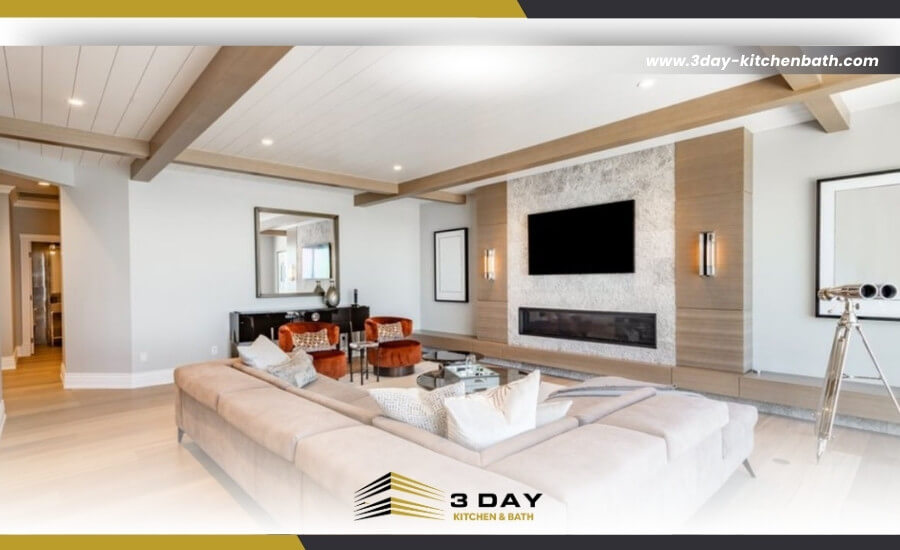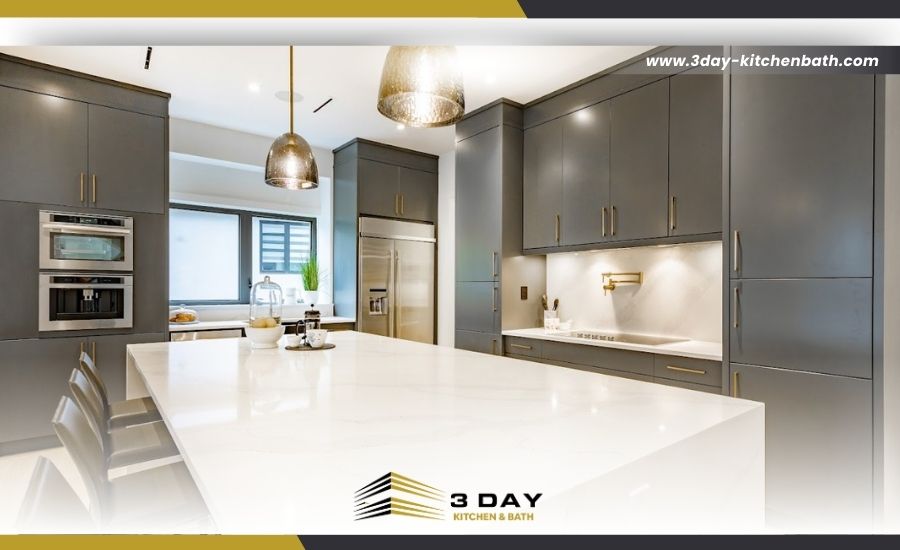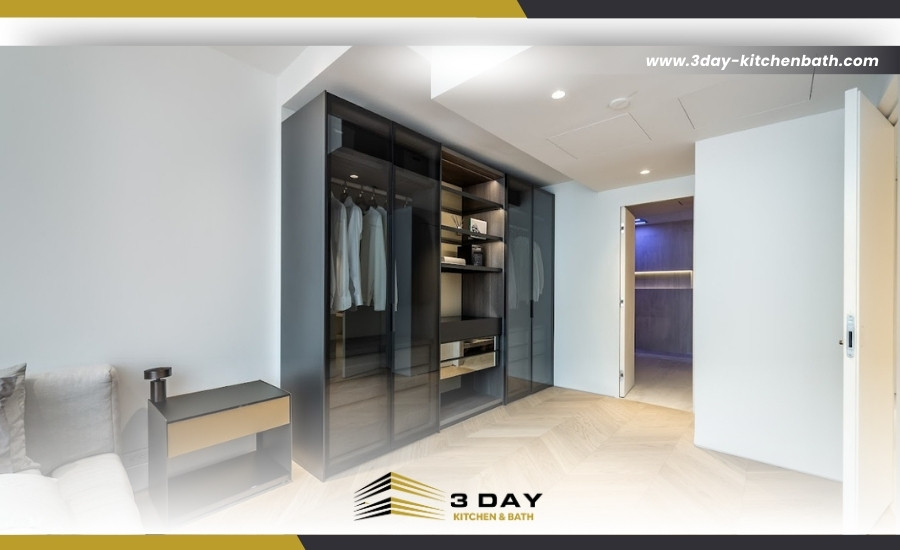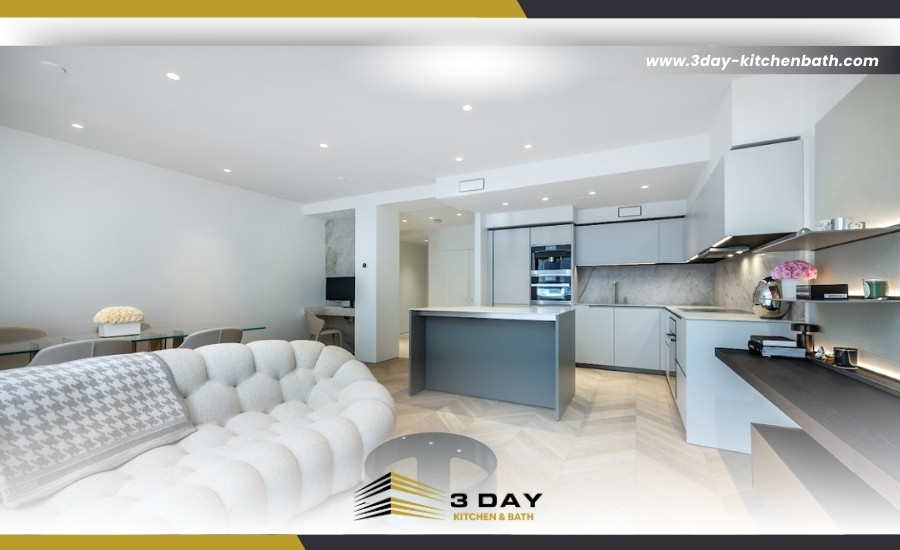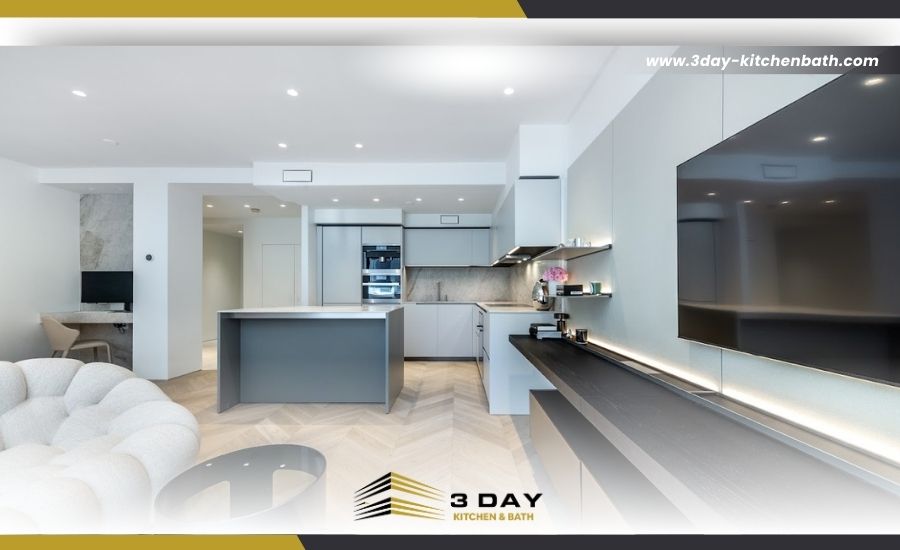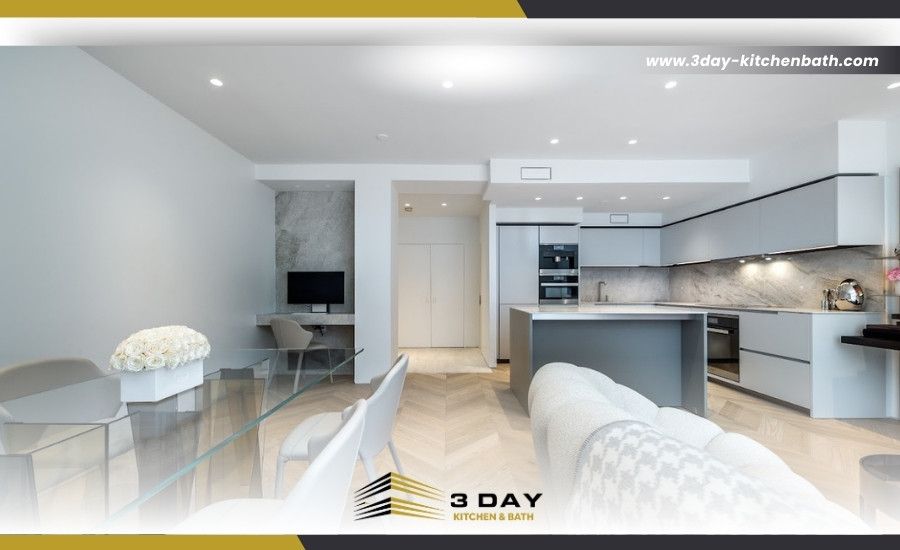- Common Home Remodel Timelines by Project Type
- Cosmetic Remodels Quick Fixes and Minor Updates
- Medium Remodels Kitchens, Bathrooms, and Additions
- Major Overhauls Full Home Renovations and Structural Changes
- Essential Checklists for a Smooth Remodeling Process
- Room-Specific Checklist for Kitchens, Bathrooms, and Bedrooms
- Whole-Home Checklist for Major Renovations
- Step-by-Step Guide to Planning Your Remodel
- Setting Realistic Expectations with a Timeline
- Preparing for Each Stage of the Remodel
- How to Minimize Delays in Your Remodeling Project
- Tips for Avoiding Common Remodeling Delays
- Managing Material and Contractor Availability
- Seasonal Considerations for Faster Completion
- Remodeling Insights for Homeowners
- Frequently Asked Questions
- What is the best season to start a home remodel?
- How do I prepare my home for a remodel?
- Should I live in my home during the remodel?
- How can I handle unexpected costs during remodeling?
- Kitchen Checklist:
- Bathroom Checklist:
- Bedroom Checklist:
- What permits might I need for different remodels?
- Get Started with 3 Day Kitchen & Bath
Planning a home remodel can feel overwhelming. One of the biggest questions homeowners ask is, how long does a home remodel take? Understanding the timeline helps set realistic expectations and keeps the project on track. This guide will explain project durations for various types of home renovations, including how long it takes to renovate a kitchen, bathroom, or entire home.
Common Home Remodel Timelines by Project Type
Different home remodels have different timelines. Knowing how long each type of remodeling typically takes can help you plan effectively. Here's a look at the common remodel types and their average durations.
Cosmetic Remodels Quick Fixes and Minor Updates
Cosmetic remodels are the quickest projects. They usually involve simple updates that improve the home's appearance without major changes to the structure. Here are some examples and timeframes for cosmetic remodels:
- Painting (Interior Or Exterior): This task can typically be completed in a few days to a week, depending on the size of the space and the number of coats needed. Interior painting may take less time since it often involves smaller areas, while exterior painting might take longer due to prep work like power washing and priming.
- Replacing Countertops: This process usually takes 1 to 3 days. The timeline depends on the material chosen. For example, laminate countertops can be installed quickly, while granite or quartz may require more time for fabrication and installation. Homeowners should also factor in time for removing the old countertops.
- New Flooring: Installing new flooring generally takes 1 to 3 weeks. This duration varies based on the type of flooring. For instance, laminate and vinyl flooring can often be installed faster than hardwood or tile, which may require additional time for acclimation and setting.
- Simple Landscaping Changes: Projects like planting flowers, adding mulch, or installing small garden features can usually be done over a weekend to a week. Larger landscape projects that involve grading or major installations, like retaining walls, will take longer.
These projects typically take a short time because they don't require major construction work. Homeowners can often handle cosmetic changes themselves or hire contractors for quick fixes.
Medium Remodels Kitchens, Bathrooms, and Additions
Medium remodels involve more significant updates that may require some structural changes. They can take longer to complete because they involve more planning and materials. Here's what you can expect:
- Full Kitchen Remodel: This type of project usually takes 6 to 12 weeks. It involves multiple steps, including planning the layout, ordering materials, and executing the construction. Expect time for removing old appliances and cabinetry, installing new fixtures, and ensuring plumbing and electrical work meets current codes.
- Bathroom Renovation: A bathroom remodel typically lasts 3 to 10 weeks. Factors affecting the timeline include the complexity of the design, such as moving plumbing fixtures, installing a new tub or shower, and selecting tiles. Detailed planning is crucial to avoid delays.
- Room Addition: Adding a new room to your home can take 3 to 6 months. This duration includes obtaining necessary permits, preparing the site, and completing construction. Room additions often require foundation work and connecting utilities, which can add time to the project.
In medium remodels factors like plumbing, electrical work, and inspections can add to the timeline. Homeowners should communicate with their contractors to get a clear picture of the process and any potential delays.
Major Overhauls Full Home Renovations and Structural Changes
Major remodels are the most extensive and time-consuming. These projects often involve gutting a home and redoing everything from the foundation to the roof. Major remodels include:
- Whole Home Renovation: Expect a complete home renovation to take 6 months to over a year. This type of project involves a detailed design phase, significant construction work, and thorough inspections. Homeowners should prepare to live in a construction zone for an extended period.
- Full Gut Renovation: A full gut renovation generally takes 4 to 9 months. This involves stripping the home down to its framing and rebuilding from there, which includes updating electrical and plumbing systems. Homeowners may encounter unexpected challenges, such as structural issues that require immediate attention, adding to the timeline.
Due to the complexity, homeowners can expect various delays related to permits, inspections, and unexpected issues like structural repairs. A major remodel can feel overwhelming, but planning and clear communication with contractors can make the process smoother.
Essential Checklists for a Smooth Remodeling Process
Having a checklist for your remodeling project can keep everything organized and on track. Checklists help you remember important tasks and ensure you don't miss anything critical during the renovation. Below are room-specific checklists for common areas and a whole-home checklist for major renovations.
Room-Specific Checklist for Kitchens, Bathrooms, and Bedrooms
Each room has its unique requirements during a remodel. Here's a breakdown of essential tasks to consider for kitchens, bathrooms, and bedrooms:
Kitchen Checklist:
- Design and Layout: Finalize the kitchen layout, including the placement of appliances, cabinets, and the sink.
- Appliances: Choose and order appliances that fit the new design.
- Cabinetry: Select cabinets and confirm the order details.
- Countertops: Decide on countertop material and style, and schedule installation.
- Plumbing Fixtures: Choose sinks, faucets, and any additional fixtures.
- Lighting: Plan for general and task lighting to enhance usability.
Bathroom Checklist:
- Layout Design: Plan the layout, including the placement of the toilet, shower, and sink.
- Fixtures: Select bathroom fixtures such as the showerhead, faucets, and tub.
- Tile and Flooring: Choose tiles for the floor and walls, ensuring they match your design.
- Vanity: Decide on a vanity style and ensure it fits the designated space.
- Storage Solutions: Plan for storage options like cabinets or shelving.
- Ventilation: Ensure proper ventilation to avoid moisture issues.
Bedroom Checklist:
- Design Plan: Consider the layout for beds, dressers, and other furniture.
- Wall Treatments: Decide on paint colors, wallpaper, or other wall finishes.
- Closet Organization: Plan for built-in shelving or storage solutions.
- Lighting Choices: Select lighting fixtures that suit your style and provide adequate illumination.
- Flooring: Choose appropriate flooring that complements the overall design.
Using these checklists can help streamline your remodeling process. Remember to communicate with your contractor to make sure everything is ordered and scheduled properly.
Whole-Home Checklist for Major Renovations
When planning a major renovation, having a comprehensive checklist is crucial. This list includes tasks that cover the entire home and ensure nothing is overlooked during the process. Here's a whole-home checklist:
- Design Consultation: Meet with designers to discuss your vision and preferences.
- Budget Planning: Set a budget that includes contingencies for unexpected expenses.
- Permitting: Research and apply for necessary permits before construction begins.
- Contractor Selection: Choose a reputable contractor with experience in major renovations.
- Material Selection: Decide on materials for flooring, countertops, fixtures, and paint.
- Demolition Plan: Create a plan for safely removing old materials while protecting the rest of the home.
- Timeline Establishment: Work with your contractor to set a realistic timeline for completion.
- Inspection Schedule: Plan for inspections at key points throughout the renovation.
- Final Walkthrough: Conduct a walkthrough with your contractor to ensure all work meets your expectations.
Following this checklist can help keep your major renovation organized and minimize the chances of delays or oversights. Clear communication with your team is essential to ensure that everyone is on the same page.
Step-by-Step Guide to Planning Your Remodel
Planning a remodel requires careful thought and organization. A well-structured plan can help ensure your project runs smoothly and stays on schedule. Here's a step-by-step guide to assist you in planning your remodel effectively.
Setting Realistic Expectations with a Timeline
Setting a realistic timeline is crucial for any home remodeling project. Knowing how long each phase will take can help you prepare for the disruption a remodel can cause. Here are some steps to help set expectations:
- Understand the Types of Remodels: Recognize that different remodels have varying timelines. As discussed earlier, cosmetic updates take less time than full home renovations.
- Consult with Professionals: Speak with your contractor to get an accurate estimate of how long your specific project will take. They can provide insights based on their experience and the scope of work involved.
- Create a Detailed Schedule: Break down your remodel into phases, such as design, demolition, construction, and finishing. This allows you to allocate time appropriately for each stage and anticipate any delays.
- Add Buffer Time: Always include some extra time in your schedule for unexpected delays. Issues like supply chain disruptions or weather can push timelines back. A buffer helps reduce stress during the project.
- Communicate Regularly: Keep in touch with your contractor throughout the remodel. Regular updates will help you stay informed about progress and any changes to the timeline.
By setting realistic expectations with a well-thought-out timeline, you can help ensure your remodeling project stays on track and meets your needs.
Preparing for Each Stage of the Remodel
Preparation is key to a successful remodel. Each stage of the remodeling process requires careful planning and execution. Here's how to prepare for each phase:
Design Phase:
- Finalize your design and layout with your contractor. This stage often involves sketches or digital designs to visualize the final look.
- Select materials and fixtures during this phase to ensure they align with your budget and style.
Permitting Phase:
-
- Apply for any necessary permits well in advance. This step may require time for approvals, especially for major renovations.
- Understand local building codes that may affect your project.
Demolition Phase:
- Prepare your home by removing furniture and protecting other areas from dust and debris.
- Ensure that utilities are turned off as necessary and that pets are safe during demolition.
Construction Phase:
- Stay organized with a list of tasks for the contractor. Regular check-ins can help monitor progress.
- Be prepared for noise and disruptions, especially during major construction.
Finishing Phase:
- Plan for the installation of fixtures, appliances, and final touches. This phase is often where delays can occur if materials are not readily available.
- Conduct a final walkthrough with your contractor to ensure everything meets your expectations before closing out the project.
By preparing for each stage of the remodel, you can help ensure the process goes smoothly. Understanding what to expect at each step will make the experience more manageable.
How to Minimize Delays in Your Remodeling Project
Delays can be frustrating during a remodeling project. Understanding how to avoid common issues will help keep your project on track. Here are some strategies to minimize delays and ensure a smoother remodeling process.
Tips for Avoiding Common Remodeling Delays
Delays can happen for various reasons, but being proactive can help you avoid many common pitfalls. Here are some helpful tips:
- Plan Thoroughly: Take the time to plan every detail of your remodel before starting. A well-thought-out plan reduces the chances of needing changes later, which can delay the project.
- Hire Experienced Professionals: Choose contractors and subcontractors with a good reputation and experience in similar projects. They are more likely to anticipate issues and keep the project on schedule.
- Set Clear Expectations: Make sure everyone involved understands the timeline and goals. Clear communication helps everyone stay on the same page and reduces misunderstandings that can lead to delays.
- Have a Contingency Budget: Unexpected costs can lead to project delays if you're not financially prepared. Having extra funds set aside can help address issues without causing a halt in work.
- Stay Flexible: Be ready to adapt if unexpected problems arise. Flexibility can help you make quick decisions and keep the project moving.
Managing Material and Contractor Availability
Availability of materials and contractors is crucial for maintaining your remodel timeline. Here are some ways to manage these factors effectively:
- Order Materials Early: Order materials as soon as possible to avoid delays. Some items, like custom cabinetry or specialty fixtures, can take weeks or months to arrive.
- Choose Common Materials: When possible, select widely available materials that contractors can easily obtain. This can significantly reduce wait times compared to custom or rare items.
- Communicate with Your Contractor: Regularly check in with your contractor about material orders and availability. They can provide updates on any potential delays or issues that may affect your project.
- Consider Off-Season Work: Some contractors may have more availability during off-peak times. Planning your remodel during these times can help you secure the best professionals for your project.
- Have Backup Plans: If a material or contractor becomes unavailable, have alternatives in mind. This flexibility can help you maintain progress even if adjustments are necessary.
Seasonal Considerations for Faster Completion
The season you choose to remodel can impact the speed and efficiency of your project. Here's what to keep in mind regarding seasonal considerations:
- Spring and Summer: These seasons are popular for remodeling projects. The weather is generally favorable, allowing for more outdoor work. However, many contractors may be busy, which can lead to longer wait times. It's wise to book your contractor in advance.
- Fall: Early fall can be a great time to remodel. Many homeowners are wrapping up projects before winter, so contractors may have more availability. Plus, the weather is still manageable for outdoor work.
- Winter: Winter can be challenging for remodeling, especially for exterior work. Cold weather and potential snow can delay construction. However, some contractors may offer discounts during this season due to lower demand, so it could be an opportunity to save money if you're doing interior work.
- Weather Preparation: Be prepared for unexpected weather changes that can cause delays. Discuss with your contractor how weather conditions might affect your project and have contingency plans in place.
- Timing for Inspections: Seasonal changes can also affect inspection schedules. Ensure that inspections are planned during times when they can be conducted without weather-related issues.
By considering these seasonal factors, you can better plan your remodel and reduce potential delays, leading to a smoother overall process.
Remodeling Insights for Homeowners
In conclusion, understanding how long a home remodel takes can help you plan and manage your expectations effectively. At 3 Day Kitchen & Bath, we aim to make the remodeling process as smooth as possible for our clients in San Diego, CA. From kitchen renovations to bathroom remodels our experienced team is here to help you achieve your dream home.
By working with professionals who prioritize communication and planning, you can navigate the challenges of a remodel more confidently. If you need expert guidance and support for your next home project, don't hesitate to reach out.
Frequently Asked Questions
What is the best season to start a home remodel?
The best season to start a home remodel often depends on your specific project. Spring and early summer are popular for outdoor renovations due to favorable weather. However, fall can also be an excellent time to remodel as contractors may have more availability. If you plan on doing interior work, winter could offer lower demand and potential discounts, making it a viable option too.
How do I prepare my home for a remodel?
Preparing your home for a remodel involves several steps. First, clear out furniture and personal items from the work area to create space for contractors. You should also set up a designated area for your family to live comfortably during the renovation. Finally, communicate with your contractor about any specific concerns or needs to ensure everyone is on the same page.
Should I live in my home during the remodel?
Whether to live in your home during a remodel depends on the project's scale. For minor cosmetic updates, staying home may be manageable. However, for extensive renovations, such as a full bathroom or kitchen remodel, it may be more comfortable to temporarily relocate, especially if utilities will be turned off or if noise and dust will be significant.
How can I handle unexpected costs during remodeling?
Unexpected costs can arise during a remodel, so it's crucial to have a contingency budget of at least 10-20% of your total budget. When issues arise, communicate promptly with your contractor to assess the situation and discuss options. If necessary, prioritize essential repairs first and postpone non-urgent changes to manage expenses effectively.
What permits might I need for different remodels?
The permits required for remodeling depend on the project's scope and local regulations. Common projects requiring permits include structural changes, plumbing, electrical work, and additions. Always check with your local building department to understand which permits are needed for your specific project to avoid delays and fines.
Get Started with 3 Day Kitchen & Bath
Ready to transform your home? Contact 3 Day Kitchen & Bath today at (619) 558-6950 for a consultation. Let us help you bring your vision to life with our expert remodeling services in San Diego, CA.


